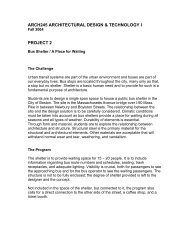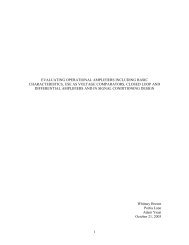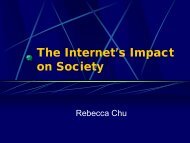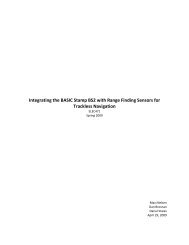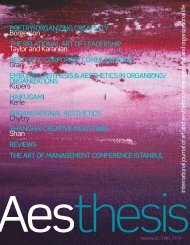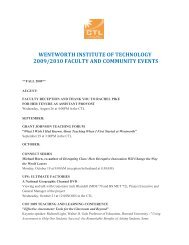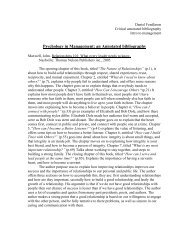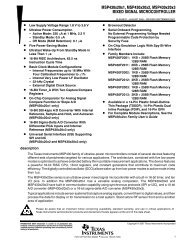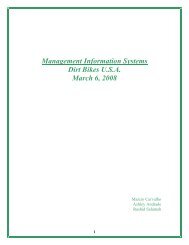Thesis Book - MyWeb at WIT
Thesis Book - MyWeb at WIT
Thesis Book - MyWeb at WIT
You also want an ePaper? Increase the reach of your titles
YUMPU automatically turns print PDFs into web optimized ePapers that Google loves.
and imaginary as one existence. The sources regarding Bunuel and Dali, since they were a collabor<strong>at</strong>ion, are Dali, Surrealism, and<br />
Cinema by Elliott King, Robert Short’s The Age of Gold: Dali, Bunuel, Artaud: Surrealist Cinema as well as Surrealism and Cinema<br />
by Michael Richardson. Chris Rodley collabor<strong>at</strong>ed with David Lynch to cre<strong>at</strong>e Lynch on Lynch, which is all about the director and his<br />
filmmaking. Along with reading books about these directors, the actual films themselves are being considered and viewed. Most of<br />
these authors discuss the idea of transforming the way we view the world by combining the physical reality with the mental dreamlike<br />
reality to make one reality, which is one of the main objectives of the Surrealist movement.<br />
Definition of Surrealism<br />
The intentions of the surrealist movement are <strong>at</strong> the forefront of many sources, which starts off the authors’ dialogue in a clear<br />
way. Dalibor Veseley contributed an important article in the 1978 volume of Architectural Design, in which he explains the vision of<br />
surrealism as a way of thinking and viewing the world, using quotes from primary sources written by Andre Breton. Veseley points<br />
out th<strong>at</strong> Breton believed “in the future resolution of those two seemingly contradictory st<strong>at</strong>es, dream and reality, of surreality, so to<br />
speak.” 2 Using this idea, Veseley deduces th<strong>at</strong> surrealists believed in a “new myth”, which is the surreality th<strong>at</strong> involved the “whole<br />
of human existence.” 3 This surreality is the “imaginary-real world of certain primitives, stripped of all supern<strong>at</strong>ural implic<strong>at</strong>ion and<br />
meanings.” 4 Stuart Knight’s “Observ<strong>at</strong>ions on Dada and Surrealism”, also in Architectural Design, adds th<strong>at</strong> surrealism is a “st<strong>at</strong>e<br />
of mind, a form of knowledge”, as opposed to just an art movement, th<strong>at</strong> was able to revolutionize the “dream world into a palpable<br />
reality.” 5 Author of Surrealism and Cinema, Michael Richardson notes th<strong>at</strong> surrealism is a convergence of the “different realms of<br />
existence” and “a meeting point between the opposites of light and dark, presence and absence, [and] actuality and imagin<strong>at</strong>ion.” 6<br />
Richardson claims surrealism is also a collabor<strong>at</strong>ive effort th<strong>at</strong> is still a “living thing.” 7 Similarly, Elliot H. King, author of Dali, Surrealism<br />
2 Surrealism and Architecture. Architectural Design 48, no. 2-3(1978), 87.<br />
3 Ibid, 88.<br />
4 Ibid.<br />
5 Ibid, 102.<br />
6 Michael Richardson. Surrealism and Cinema. Oxford; New York: Berg, 2006, 1.<br />
7 Michael Richardson. Surrealism and Cinema. Oxford; New York: Berg, 2006, 5.<br />
21



